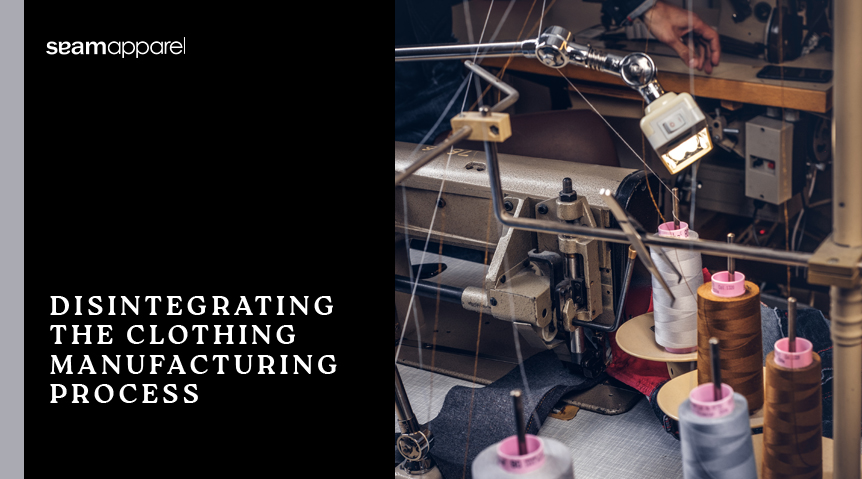Introduction of Production Process
The procedure for making clothes is extensive. In the textile industry, every operation is carried out by a different department. The manufacture of clothing cannot be briefly explained. The production of clothes involves a series of steps, including designing, clothing sampling, laying, marking, cutting, stitching, checking, finishing, pressing, and packing. Through this procedure, raw materials become finished goods. We’ll go through every stage of making a garment, section by section.
What Is The Production Process Of Clothing? A Step-By-Step Guide
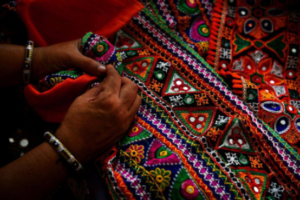
The process of making custom clothing includes product design, fabric manufacturing process selection and inspection, pattern making, pattern grading, marking, spreading, cutting, bundling, sewing, pressing or folding, finishing and detail work, dyeing, and washing, quality control, etc.
Design
Creating new clothing by upgrading or modifying new designs to fulfill new functions is known as clothing design. The clothing design task consists of selecting the style, color, and materials to meet specified functional requirements for the clothing.
Sample
A design is submitted by the buyer and turns it into an actual garment. Here are several standards to create a preliminary sample. They keep the order to develop it.
-
Sample For Pre-Production
When production accessories are delivered to the apparel manufacturing process, the clothing creates a sample for a customer. that is referred to as a pre-production sample.
-
Production Demonstration
The buyer is given the assurance that the bulk is being manufactured according to the garment spec sheet.
-
Sample Of Shipping
Sending inspection for shipment with samples. who delivers the goods to the customer. Because the shipping inspector provides a letter to the buyer as the basis for the sample, the sample is crucial.
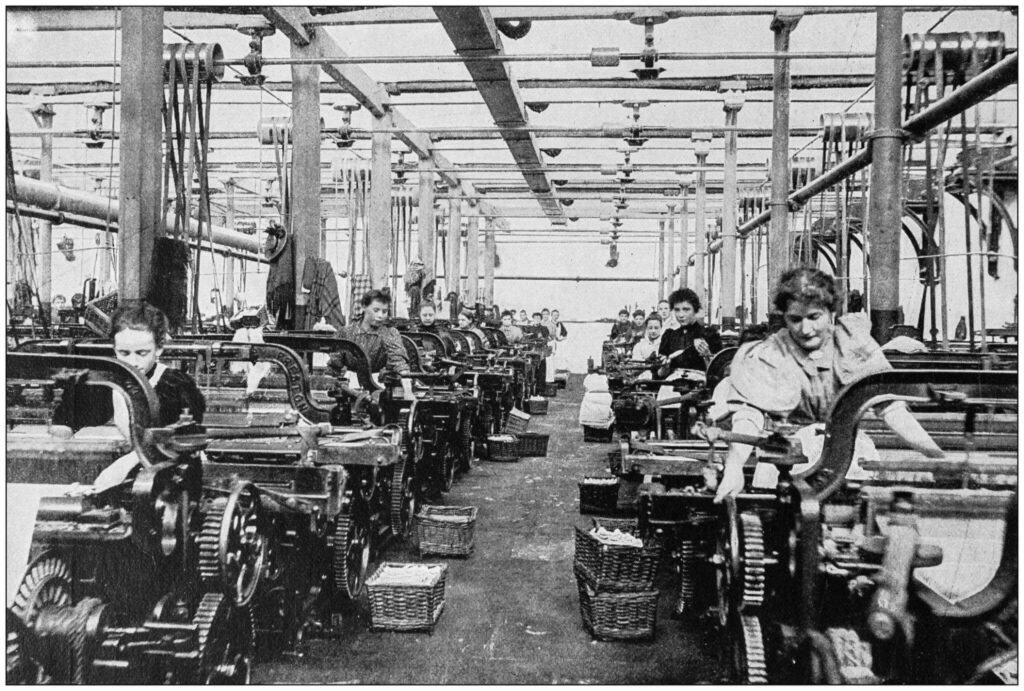

Sample Creation Process
There are numerous methods for creating samples. But most widely use this kind of method when manufacturing clothes. Here are steps for creating samples in the clothing manufacturing production process sector.
- Imagination and Sketch
- Initial Pattern and Materials
- Give the consumer a sample that is in the form of a photo.
- Consider the customer feedback
- Dummy
- Production Approval
- Consider the customer feedback
- Massive production
- Send a photo, a salesperson, and a sample
- Sample of a production
- Send to the Clothing
Cutting
A single piece of fabric is a sheet. We must cut when we require clothing. The sample, marker, and fabric spreading process ends with cutting. because the stitching will come next. When sewing begins, other processes also begin.
Although there are numerous cutting methods, mostly the process is done by hand. The cutting master used a hand-cutting machine to cut the fabric. The place where the fabric is cut has a large, long table.
Maker paper was maintained on the fabric’s surface, and cutting musters were used to cut the fabric along the line.
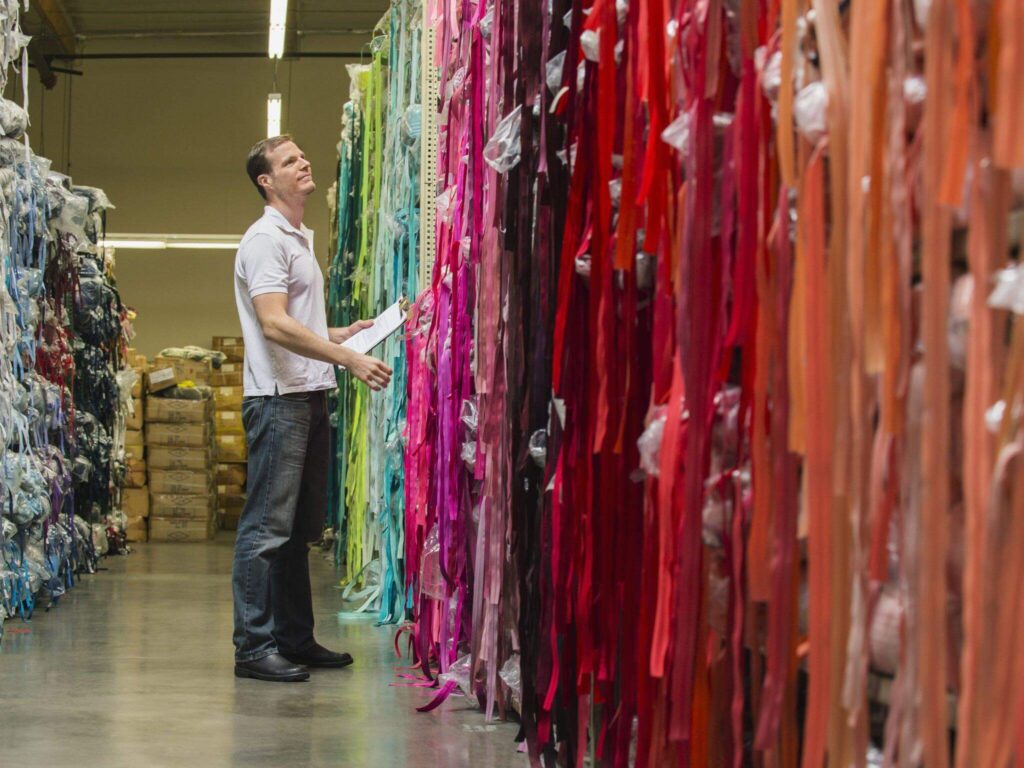

Creating Patterns
Drawing or art on flat paper or flat fabric is a pattern-making technique. In essence, flat paper is used in the pattern-making process in the apparel industry. mainly because pattern paper may be readily removed from the pattern. Therefore, paper is used in the pattern-making process in the clothing industry. Paper is also used to create patterns. The name of the paper is “pattern paper.”
Because creating the pattern is the first step in creating a garment, it is crucial. If the pattern is precise, the clothing should be as well. Buyers provide a size chart for the garments, which follows the size and creates a pattern with room for error. Every garment’s main problem is the clothing pattern design.
Making Marks
In the marker procedure, each pattern is preserved on a length of fabric. Additionally, this manufacturing procedure reduced fabric waste before cutting. The effectiveness of the fabric is increased by markers.
Categories Of Markers:
- Creation of markers by hand
- Computerized procedure for producing markers
-
Making Markers By Hand First:
A man completed the maker manually in this method. They don’t use any software on computers. In essence, the person performing this operation will be exceedingly knowledgeable and skilled. The process of producing clothes is done by hand.
-
The Creation Of Markers Using Computers:
This was entirely completed on a computer utilizing CAD (Computer Aided Design) software or other programs.
Spreading Fabric
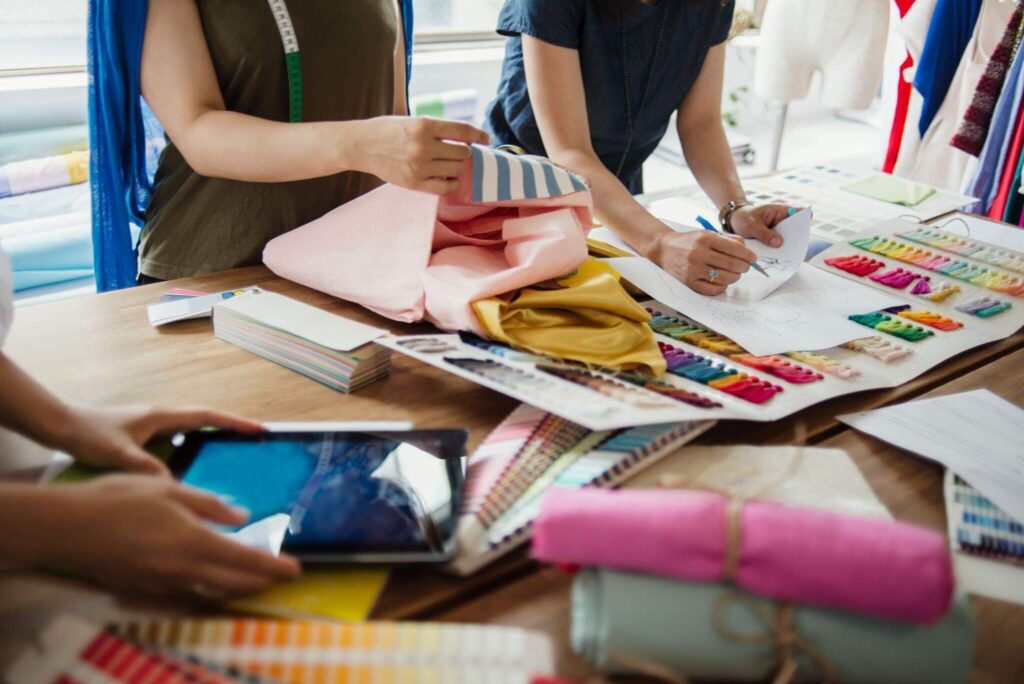

During this procedure, the fabric is spread out on a large table for cutting. Fabric spreading is crucial since improper fabric laying will result in an incorrectly cut product. Therefore, challenges in creating clothing arise when the fabric is put into manufacturing. As a result, the clothing manufacturing industry requires proper fabric spreading.
One type of clip (the cloth-attaching clip) was used to secure the fabric when it was laid properly. The cloth surface is also maintained using marker paper. The fabric is then clipped on after that.
Sewing
A garment’s finished result depends heavily on sewing. We cannot market our products internationally without high-quality sewing. Two pieces of fabric are joined by the act of sewing. Sewing is influenced by a variety of things. (For instance: thread count, worker capacity, machine type, needle size, and production line.) So the sewing section is an essential component of the clothing production sector and not just a way to attach fabrics.
Quality Checking
Every piece of clothing is checked for quality first because if it isn’t, they won’t be able to get good consignment in the future. Ten workers should serve as finishing quality inspector assistants, a few workers should serve as sewing quality inspector assistants, and a few workers should serve as finishing quality inspector assistants. There is also an examination room for these outfits. For each customer, they offer a quality manager and numerous cutting-edge machines.
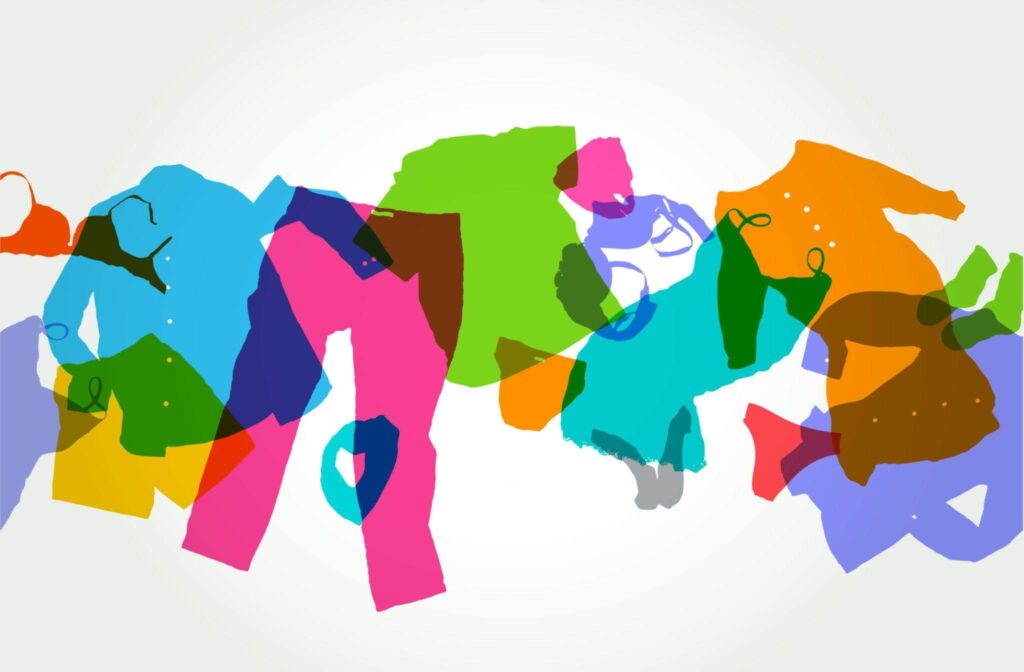

What Are The Factors Of Production For Clothes?
Here are some factors of production for clothes
- Efficiency
- Industrial design Technology
- Tools for HR and training with technology
- Buyer alliances
- Consumer assistance
- Product creation
Finishing
The finishing department is the one that comes last and is equally vital to the way the clothes turn out in the end. The following steps are primarily included in this department.
- Thread Sucking
- Ironing
- Packaging
- Store
Shipping And Packaging
The production of apparel is now complete, with personnel packaging, labeling, and sizing items according to customer requirements. All of the clothing is wrapped in plastic for protection before being placed in cardboard boxes and sent to the client center.
Complete clothing is inspected to ensure the quality of the finished products. Following this process, internal quality checks are carried out to ensure that the boxes contain no unfinished clothing.
Ready Product
Finally, the clothing is prepared for shipping and is ready for the ultimate consumers.
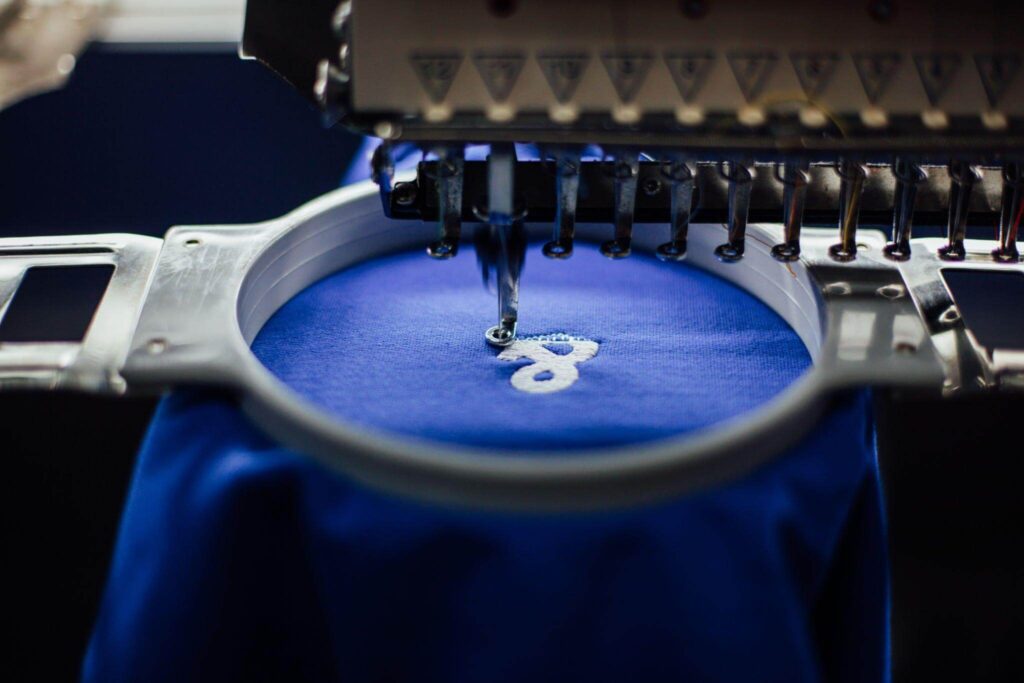

What Are The 4 Main Textile Processes?
Spinning
A staple (a mass of haphazardly arranged fibers) can be spun into an extremely lengthy piece (yarn). The many diverse spinning procedures vary depending on the characteristics of the fibers and the intended yarns. The objective is to create a better yarn that is robust, hairless, smooth, and has a low hair content.
Dyeing Yarn
The technique of dyeing involves using colorants to turn greige (natural) yarn into colored yarn. The stability and penetration of the dye must both be taken into account to achieve optimal dyeing uniformity. It is crucial that the fabric keeps its natural color after numerous items of washing.
Weaving
The weaving process enables the yarn to intersect with one another to create fabrics after spinning and dyeing. Fabric is produced when the weft yarn crosses the warp yarn; it is a synthesis of the superiority of the raw material, the inventiveness of the design, the structure, and the expertise of the weaver.
Finishing
The group of processes known as “textile finishing” or “ennobling” are applied to the fabric to enhance its ability to be dyed, printed, hydrophilic, have color, have a certain handle, and have a certain final appearance.

